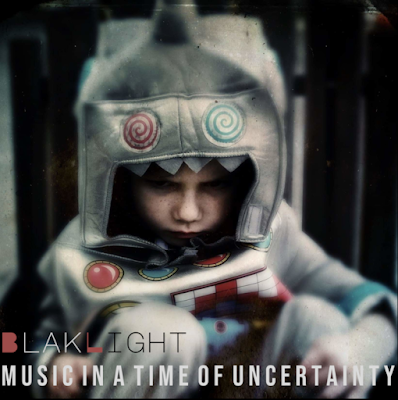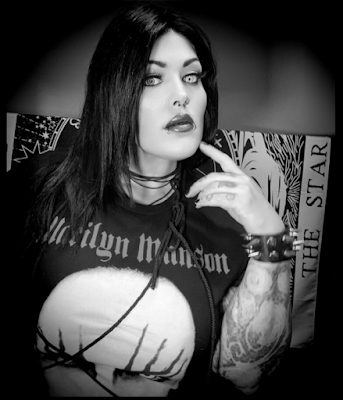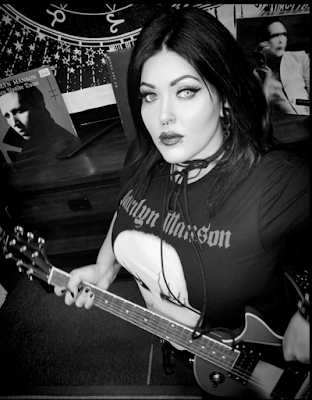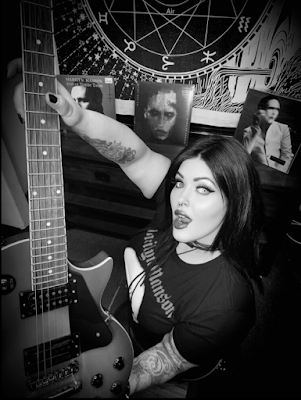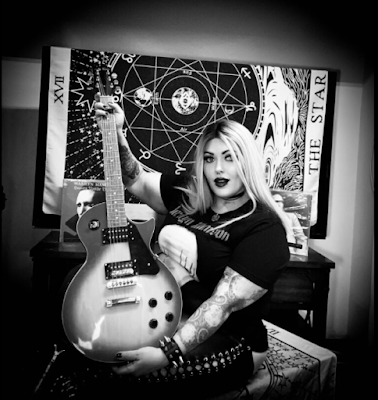“When we're under the BlakLight, everyone sees who you want to be now.”
Since discovering “Isolation,” I’ve been genuinely looking forward to the release of BlakLight’s debut album Music in a Time of Uncertainty.
In many ways, BlakLight is everything I hoped to find when I began Darkness Calling. Their music is dark but danceable — emotionally weighty, yet fun. Like their album’s title suggests, it’s almost as if these songs are saying: “Dance, despite these bizarre End Times you find yourself waking up to each morning.”
Below, I’ll be providing a track-by-track review of the album, as well as embedded Bandcamp players so that you might follow along. I encourage you to sample at least a few of these mesmerizing songs. This album is truly an addictive, nearly flawless collection of synthpop.
Let’s dig in.
1. Under the BlakLight
I’m a firm believer that albums always need to start with a bang. “Under the BlakLight” does just that, introducing both the band and the musical “universe” you’re about to enter. “When we’re under the BlakLight / Everyone sees who you want to be now,” sings Brian Belknap over Adam Collier’s infectious synth soundscape. The message is loud and clear: the songs you’re about to hear are going to strike a nerve and uncover some emotional truths — even if the heartfelt lyrics are carried on a wave of glittering pop glory.
2. Control
I’ve listened to the album a few times now, and “Control” currently takes its spot as my favorite track on the album. This is incredibly surprising for a few reasons. First of all, it’s rare (sadly) for any song on an album to surpass its singles. As a massive fan of “Isolation” and “Unknown Love,” I assumed that BlakLight had more tricks up their sleeves, but I also figured that I had perhaps heard the “best” of what they had to offer. “Control” proved me wrong — and it’s only the second track!
What do I love so much about “Control”? Well, for one thing, it might be the darkest song on the album, sonically-speaking. The synth arrangement calls to mind Depeche Mode’s “Precious,” to give you some sort of idea (but you really should just tap that Play button above). Brian Belknap lets his voice slither in that sweet, lower part of his range for the majority of the song, until the final line in the chorus, when dual Brian’s harmonize: “It’s too late to take control.” What a moment.
3. Isolation
I’ve gushed about “Isolation” before, but why not do it again? It was my introduction to “BlakLight,” and months later, it’s still an undeniably fun track to listen to — one that I can never bring myself to skip, with lyrics that romantically paint a picture of the fragile world we now find ourselves in: “Come on, take my hand / Take my hand / And let’s dance in isolation.”
The driving synths will pump you up, making for a perfect workout track — but Belknap’s crooning voice and bittersweet lyrics offer a glimmer of melancholia that makes the listener hesitate. Is this a reprieve from the bleakness of our world — or a reminder that things may never be the same again?
4. Unknown Love
The second single by BlakLight is equally irresistible. Granted, I’ve probably heard it more than most — as this track has spent some considerable time on our Spotify playlist — but I still find myself absent-mindedly singing it from time to time. “If you are there / You are my unknown...”
Listen to this track once and try not to think about it tomorrow. (You can’t do it!)
This song also contains one of the most heart-wrenching lyrics on the album: “I dream just to see you.” It’s hard to tell what’s better: the emotional vocal delivery or the words themselves.
5. The Sound
When these guys sequenced their album, they knew what they were doing. While “The Sound” is by no means a bad track (This album doesn’t contain any), it might not be as memorable as some of the other offerings on BlakLight’s debut. With that said, it’s placed comfortably in the middle of the album at Track #5. If this had been the first song I’d ever heard by these guys, it still would have impressed me, but “The Sound” is somewhat overshadowed by the preceding musical journey.
6. Bittersweet
The word “Bittersweet” is probably the perfect word to describe the feeling that Brian Belknap evokes with his lyrics. So many of these songs seem to describe a fantastic love that has deteriorated for one reason or another — remembering the highest of highs from the lowest of lows.
“Bittersweet” (the song) has some neat moments: namely an electric guitar that permeates the track (provided by Pano Coromelas). It’s a classic little 80’s touch that doesn’t overpower the song or put it into kitschy synthwave territory. This might be the most “different” sounding track on the album for that reason, but it doesn’t disappoint.
7. I Remember Nothing
Outside of “Control,” this is another one of my favorite tracks on the album. “Something in me fades and dies / I remember nothing.” If you’re just reading these words, you may wrongly chock them up to melodrama. But when Brian sings these things, you can tell he means them. Of course, it helps that it’s all balanced by Adam Collier’s perfect synth programming. If you’re not sure if you’re in the mood to dance or cry (In 2020, who can tell?), this is the perfect track for you.
8. This Lonely Night
“This Lonely Light” was recently released as a single, but I actually held off from listening to it until I could hear the album in full. Listening to it now, I can tell why it was chosen as single #3. It features a catchy synth arpeggio throughout, a driving snare, and a soaring chorus that really highlights Brian’s knack for channeling grandiose, almost operatic visions of love: “Tearing the walls apart / We’ll leave this place behind / And if it never stops / This lonely night.”
9. Last Chance
Who said disco was dead?
Despite its placement as the second-to-last track on the album, “Last Chance” is another contender for a strong BlakLight single — just one more indicator that this is a very strong collection of songs. “Last Chance” features one of the band’s catchier choruses: “This is our last chance / We have to move on…”
10. Lost...
And so the journey ends — but not with a somber, dying gasp. Prepare yourself for a flurry of keyboard flourishes and buzzing synths. You’ll have so much fun dancing in your living room that you may not notice when Belknap sings, “Everything I know seems so distant / What is it for? / It could all be gone in an instant / I’m lost…”
